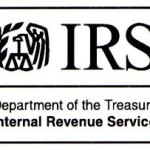 Eligible taxpayers can contribute up to $5,500 to an IRA. For someone who was at least age 50 at the end of 2014, the limit is increased to $6,500. There’s no age limit for those contributing to a Roth IRA, but anyone who was at least age 70½ at the end of 2014 is barred from making contributions to a traditional IRA for 2014 and subsequent years.
Eligible taxpayers can contribute up to $5,500 to an IRA. For someone who was at least age 50 at the end of 2014, the limit is increased to $6,500. There’s no age limit for those contributing to a Roth IRA, but anyone who was at least age 70½ at the end of 2014 is barred from making contributions to a traditional IRA for 2014 and subsequent years.
The deduction for contributions to a traditional IRA is generally phased out for taxpayers covered by a workplace retirement plan whose incomes are above certain levels. For someone covered by a workplace plan during any part of 2014, the deduction is phased out if the taxpayer’s modified adjusted gross income (MAGI) for that year is between $60,000 and $70,000 for singles and heads of household and between $0 and $10,000 for married persons filing separately. For married couples filing a joint return where the spouse who makes the IRA contribution is covered by a workplace retirement plan, the income phase-out range for the deduction is $96,000 to $116,000. Where the IRA contributor is not covered by a workplace retirement plan but is married to someone who is covered, the MAGI phase-out range is $181,000 to $191,000.
The deduction for contributions to a traditional IRA is claimed on Form 1040 Line 32 or Form 1040A Line 17. Any nondeductible contributions to a traditional IRA must be reported on Form 8606.
Even though contributions to Roth IRAs are not deductible, the maximum permitted amount of these contributions is phased out for taxpayers whose incomes are above certain levels. The MAGI phase-out range is $181,000 to $191,000 for married couples filing a joint return, $114,000 to $129,000 for singles and heads of household and $0 to $10,000 for married persons filing separately. For detailed information on contributing to either Roth or traditional IRAs, including worksheets for determining contribution and deduction amounts, see Publication 590-A, available on IRS.gov.
Also known as the retirement savings contributions credit, the saver’s credit is often available to IRA contributors whose adjusted gross income falls below certain levels. For 2014, the income limit is $30,000 for singles and married persons filing separate returns, $45,000 for heads of household and $60,000 for married couples filing jointly.
Eligible taxpayers get the credit even if they qualify for other retirement-related tax benefits. Like other tax credits, the saver’s credit can increase a taxpayer’s refund or reduce the tax owed. The amount of the credit is based on a number of factors, including the amount contributed to either a Roth or traditional IRA and other qualifying retirement programs. Form 8880 is used to claim the saver’s credit, and its instructions have details on figuring the credit correctly.
Other tips in the Tax Time Guide series are available on IRS.gov.
